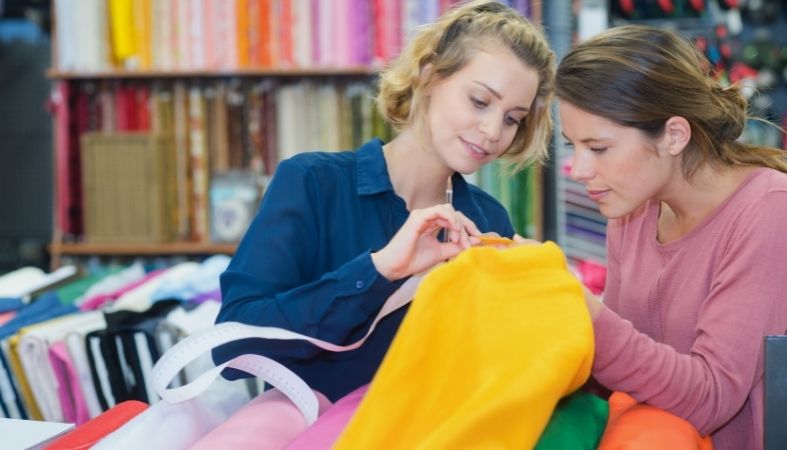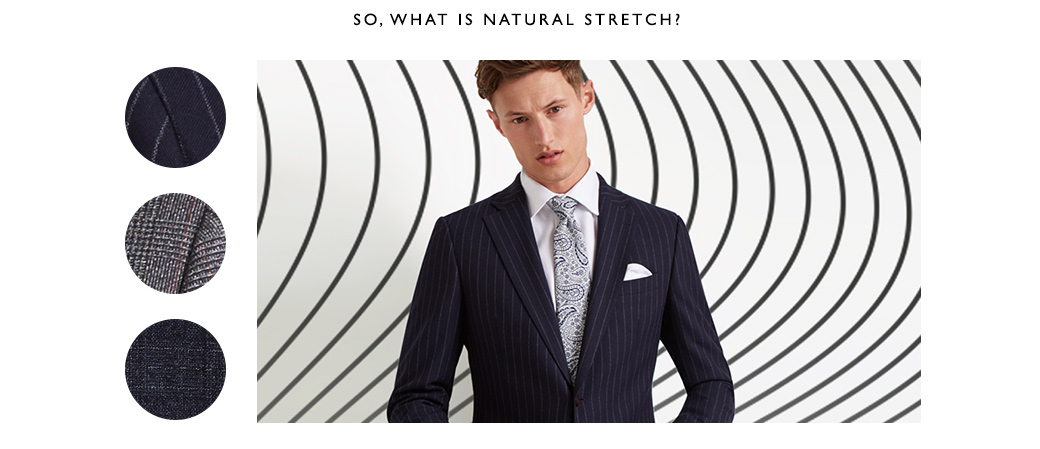All 4 Way Stretch Fabrics for Dummies
Wiki Article
How All 4 Way Stretch Fabrics can Save You Time, Stress, and Money.
Table of ContentsExcitement About All 4 Way Stretch FabricsRumored Buzz on All 4 Way Stretch FabricsTop Guidelines Of All 4 Way Stretch FabricsNot known Details About All 4 Way Stretch Fabrics The Main Principles Of All 4 Way Stretch Fabrics 9 Simple Techniques For All 4 Way Stretch FabricsGet This Report on All 4 Way Stretch Fabrics
As I likewise desire UV protection from my garments when I go out, I would certainly choose a densely woven cotton textile. Even the underclothing is much better in cotton (No spandex bands anywhere near the skin). Take a look at the most effective textiles suitable for making summer season clothes. Another factor to consider when buying the material is the means it will after washing.A safe bet would be to purchase least 10% additional fabric. If you can purchase preshrunk textile, this is the most effective. Preshrunk fabric will certainly have tags that will say" etc. If you are trying to find a material that will certainly not extend or lose shape, you can look for the "anti-sag" label.

If you are matching the color, like selecting the cellular lining for the main fabric or selecting material to include as trim, this is especially important. The material display rooms will usually have a light well where you can see the material in sunshine (or a home window with excellent light from outside).
All 4 Way Stretch Fabrics Fundamentals Explained

Many fabrics have to do with 44 vast. When you go to buy textile, quote just how much you want initially and afterwards most likely to the shop. Have a look at this article to know the response to this often heard concern "How much textile do I need". With a fat quarter, you will certainly get an 18 vast by 22 long.
These are readily available in the shops I constant as cut pieces they are mainly treasured low and several of them, when they are last off the bolt, valued really low. You will certainly have to ask the salespersons for pieces like that. Some fantastic deals can be had in this manner. In dressmaking, we get fabric by the yard/meter.
The Best Strategy To Use For All 4 Way Stretch Fabrics
In a quarter of a backyard, you obtain a 9 by 44 strip of textile, which is concerning 22 centimeters in size. According to the size of materials, they may be called single-width and double-width.Pick materials that are not too difficult or rigid, or you wouldn't be comfortable in them. Bed linen, Jeans, flannel, For colder climates, choose wool (100% as well as woollen blends) wool tweeds, wool crepe; it basically depends on what pants you are talking concerning Tailored pants, Unstructured Pant, Combined, Pants.
Corduroy is comfy to put on material to choose for pants. All cotton materials are great for children. You can pick a cotton satin stretch or a cotton twill or cotton satin or lawn. Knit materials are also wonderful for youngsters you can opt for wool knits. Interlock knits are dressmaking knits that stretch throughout the grain.
The Basic Principles Of All 4 Way Stretch Fabrics
Cotton grass cloth in attractive prints is excellent. Silk jersey is a terrific fabric for stitching skirts, as is Ponte Roma weaved fabric.Drapey rayons, soft wool, lycra blends, and stretch velvets are all appropriate for sewing skirts. Wool (Woollen crepe has an excellent drape and gives enough framework for coats; woollen tweeds are excellent as well), Linen & Flannel. Raw silk, satin, taffeta, velvet, Shoelace, silk chiffon, and Fabric are all excellent for making gowns.
You can get medium-weight materials with some spandex/elastane included for a suitable bodycon-type gown. For drapey dresses, you can choose light-weight materials. Jersey has a drapey fit like this. Crepe, challis, and charmeuse are all drapey textiles fit for this style. Have a look at these blog posts: Ideal material for making casual outfits and tops; Names of various gowns. Rayon, Acetate, and cotton lining materials are commonly made use of.
Light-weight cotton fabric, Cambric, Chintz, Twill, Faille, Seersucker, Poplin, lightweight woven broadcloth, batiste, bed linen, eyelet are good for making t-shirts and shirts. Smooth satin fabric is great for making airy tops. When acquiring patterned material (many of the formed fabric comes with a width of 45 or 54 inches), there will certainly be pattern repeat in these textiles, and this should be taken into factor to consider when reducing fabric as well as purchasing them i.e., if you want to match the patterns at the joints.
All 4 Way Stretch Fabrics Fundamentals Explained
The concepts will certainly be distributed in a planned fashion on the textile. You might discover in some cases If the print is not placed on the fabric appropriately, it can not be matched or lined up when built without distorting the textile and the hang of the garment.

You can find out more concerning grain and grainline of fabric below. The fabric weight hinges on numerous variables like the weave, fiber type, and so on and is usually represented by GSM. GSM can vary from 60 -700; 700 being the GSM of really top notch woolen fabric. A denim material has a GSM of 400, depending on the weave.
One point you have to keep in mind is that higher material weight does not represent greater fabric quality. It just is an indicator of the viability of the textile for a particular project. You can not choose high material weight material jeans for a light-weight drifting stole. Knowing the fabric weight serves when contrasting the very same kind of textiles, yet also this will certainly depend on its application.
In a nutshell, the most vital requirements to look for in the material you purchase are as follows (https://www.brownbook.net/business/53052309/all-4-way-stretch-fabrics/). The number of strings per inch of material (yarns-per-inch).
The smart Trick of All 4 Way Stretch Fabrics That Nobody is Talking About
This is very essential in any type of textile. In top quality material, this equilibrium (either in numbers or in dimension) will certainly i thought about this always be maintained. Processes utilized on material to boost look and efficiency. The fibers that are woven to make the fabric will either be as a single strand or will be developed by integrating 2 threads (turned).A two-ply thread is remarkable to a single-ply thread.
If you are preparing yourself to begin a new stitching job, selecting a material will be the most important step as soon as you choose what you intend to make. After you've gone to all the difficulty and expense of getting the stitching machine you like, a pattern you enjoy, and a fabric you enjoy, you want the ended up item to be a success, right? One way to accomplish that is to begin by ensuring your fabric is genuinely right for the project.
The 8-Second Trick For All 4 Way Stretch Fabrics
As an example, if you're making a patchwork, you'll automatically desire to use quilter's weight cotton for ideal results. Yet suppose you wish to make an item of garments? Exactly how do you recognize which fabric will provide you the best result? Choosing a material merely because you enjoy the print or style on it isn't necessarily the very best method.In order to stay clear of doing a whole task for basically absolutely nothing, we have actually put together some ideas to assist you choose which material is best for your project. Let's claim you currently have a job in mind; exactly how do you find the right textile for it?
Think of the qualities you want the ended up product to have. If clothes, will it be fitted or loosened? Dressy or daily? For warm weather condition or cold? Do you want a strong color or a print? If you are making a non-wearable thing such as a cushion cover or pot holder, make use of a strong textile such as canvas.
There is a lot info out there regarding materials, their qualities, and their usages, it might reach be frustrating! Do not try to take it in all at as soon as; just begin with the job at hand. Find out all you can regarding the textile you utilize for this one job.
Report this wiki page